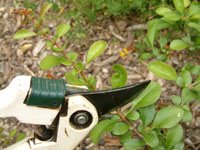
For good reason
Buddleia is often called 'butterfly bush'. Its beautiful fragrant flowers offer rich stores of nectar that prove irresistible to red admiral, brimstone, comma, tortoiseshell, white and peacock butterflies, especially if it is planted in the sun. Butterflies and bumblebees are also honing in on marjoram, lavender, golden rod and hemp agrimony. Hoverflies and honeybees, meanwhile, are feasting on the sweetly scented native plant, meadowsweet.
A number of night-scented flowers are out this month, including evening primrose and night-scented stock. These will attract night-flying moths to their nectar and if you venture out at dusk you might see bats flying in hot pursuit of the moths.
This is a good time to divide autumn crocus and to cover ripening fruit if it is intended only for human consumption. Spring-flowering wild flower meadows should be cut now and it is a good time to do any severe pruning or coppicing of beech.
 July is a relatively quiet time in the bird world. Most of the young have fledged and males no longer need to win a mate or defend territory so birdsong is less noticeable. House martins, swifts and swallows drift in the warm summer evening air, feasting on flying insects. Disease spreads quickly in the warm weather so try to keep feeding and drinking areas clean, washing them in warm water with a mild, environmentally friendly detergent such as Ecover. Regularly top up drinking water.
July is a relatively quiet time in the bird world. Most of the young have fledged and males no longer need to win a mate or defend territory so birdsong is less noticeable. House martins, swifts and swallows drift in the warm summer evening air, feasting on flying insects. Disease spreads quickly in the warm weather so try to keep feeding and drinking areas clean, washing them in warm water with a mild, environmentally friendly detergent such as Ecover. Regularly top up drinking water. 




